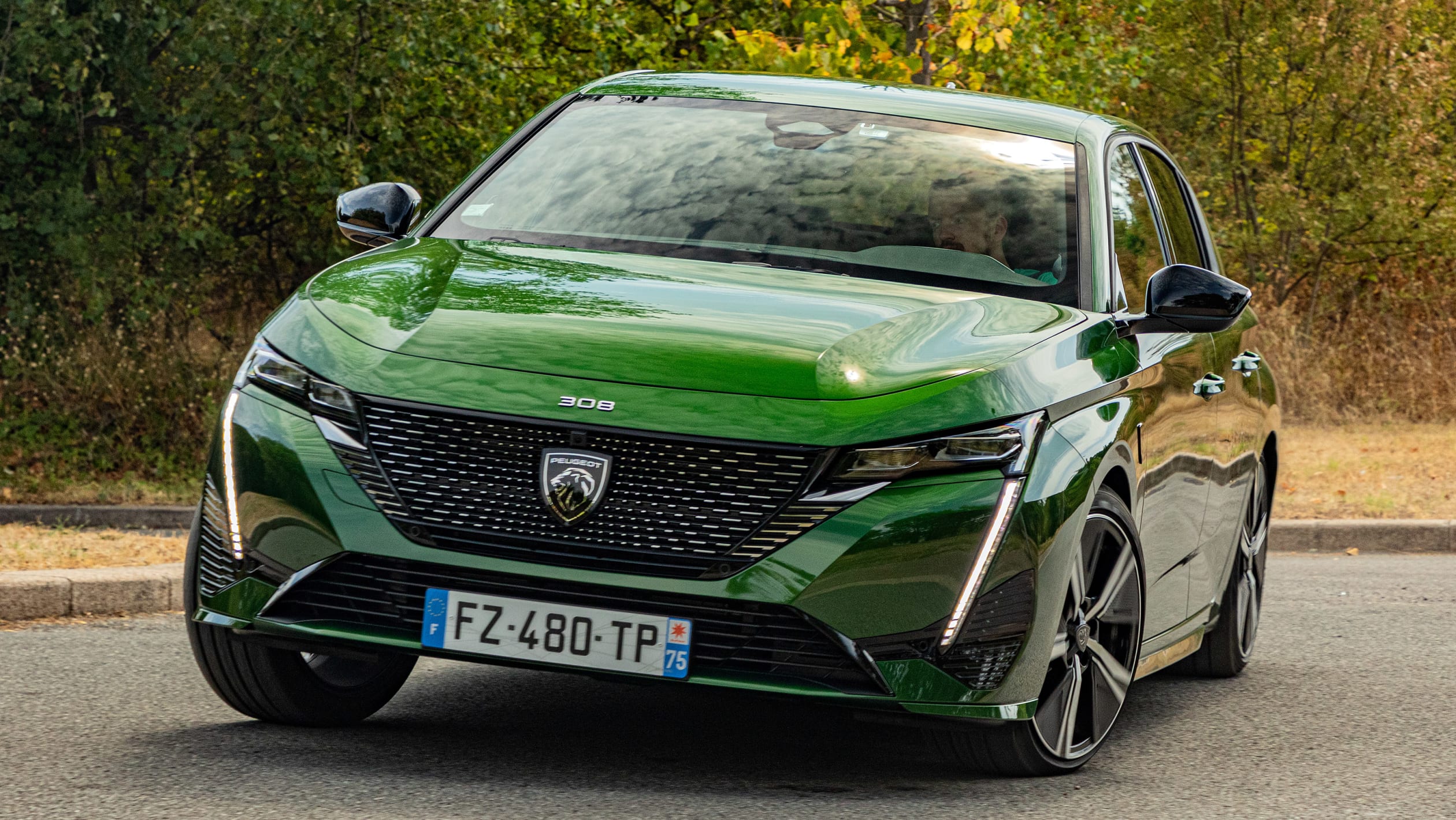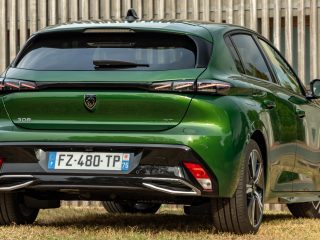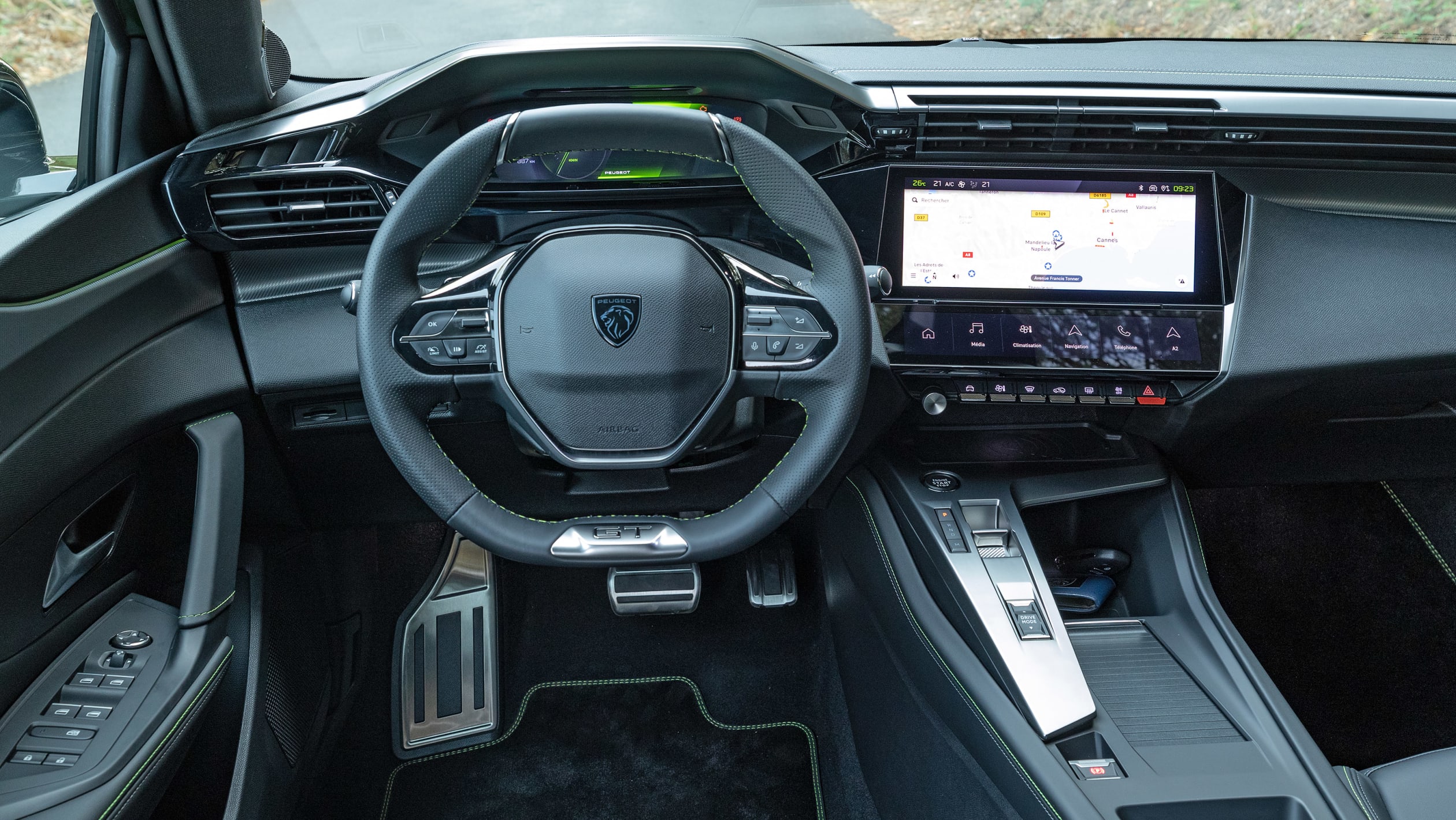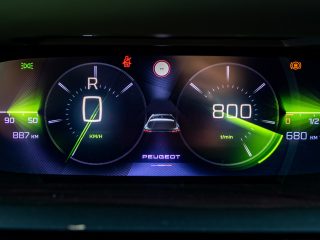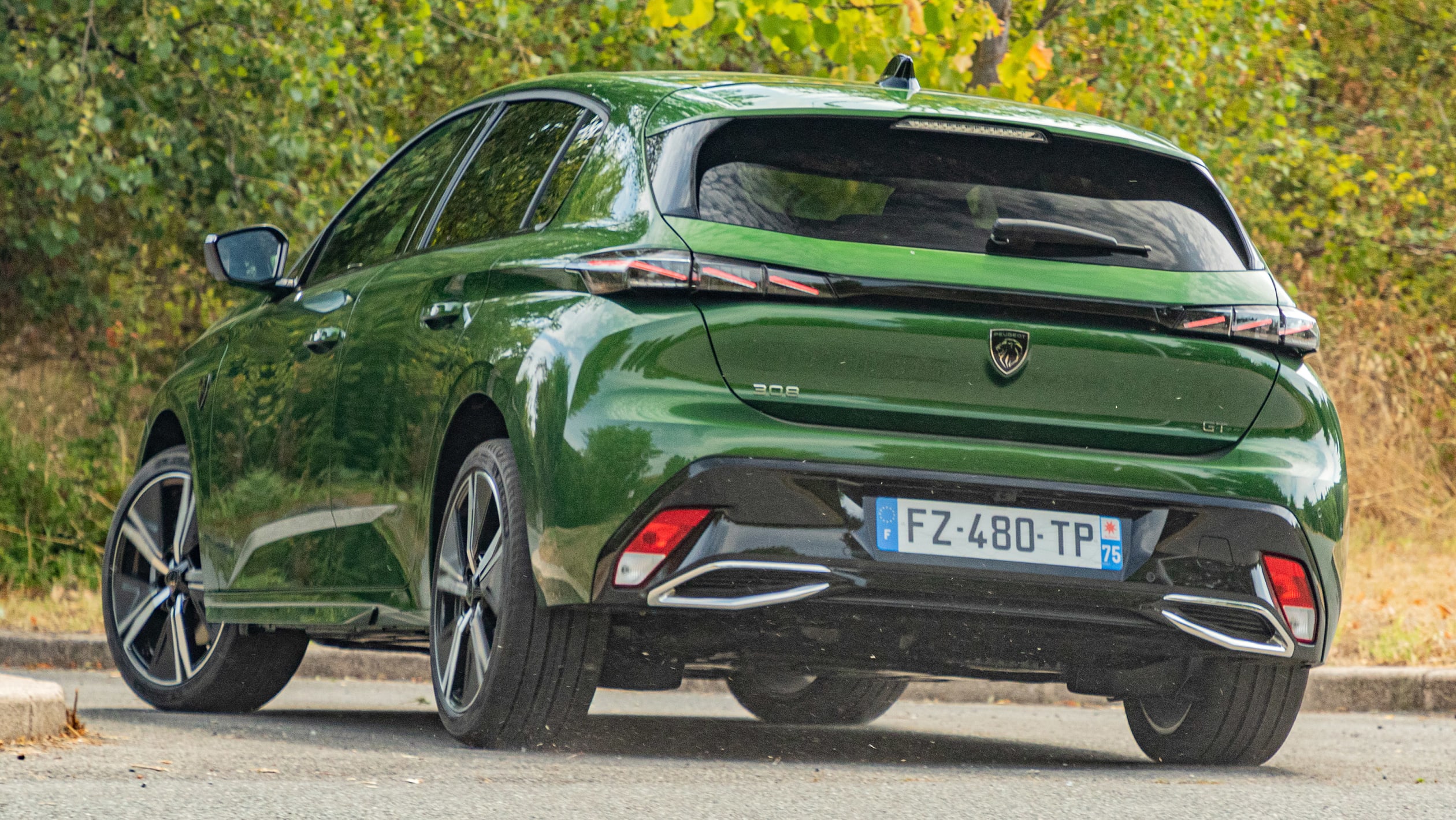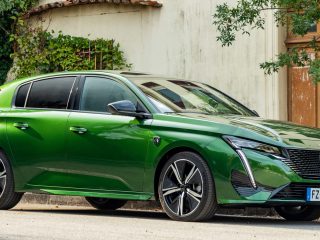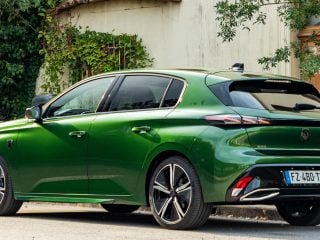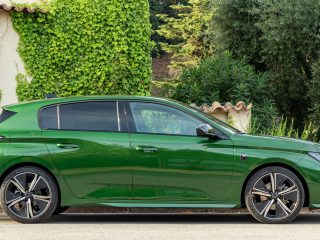The all-new Peugeot 308 hatchback has arrived to challenge the Volkswagen Golf, Hyundai i30 and Toyota Corolla, but what’s it like on the road? We find out.
Peugeot has a new logo as part of its rebranding and push to go more premium, and its first model to wear the lion’s face (without its body for the first time since the mid-seventies) is this: the new 308.
The model it replaces was a solid family hatchback, but ultimately it never did enough to become a class leader. This new version takes the fight to the likes of the Mazda 3, Hyundai i30, Volkswagen Golf, Toyota Corolla and Ford Focus as the most technologically advanced, the most efficient and the most refined family hatch the brand has built.
It will launch in Australia early next year, but we’ve been able to snag a first drive of the 308 in Peugeot’s home country.
On approach, it looks much smarter. Sleeker proportions play a part; it’s 105mm longer than before and sits 16mm lower. Whether the fitment of Peugeot shields to the front wings – Ferrari-style – on top spec GT and GT Premium models is a cool touch or a bit much, we’ll let you decide. But we reckon Peugeot hasn’t had such a handsome hatch since the 306.
The cabin is another hit, too. It’s not just the contemporary design that stands out, but the finish. Build quality feels great, and the switchgear feels slick. There’s one or two hard plastics about the place, but otherwise it’s not far shy of the premium alternatives.
Infotainment tech has previously been one of the big let-downs of Peugeot cabins, but for the most part, an all-new system has fixed this. The new 10-inch display looks great, and is backed up by a smaller touchscreen with shortcuts for all the major functions. Loading times are quick, and while the climate controls are still touch-only, the larger display makes them easier to control. It’s a massive improvement.
It’s not all rosy though. Peugeot’s i-Cockpit positions updated digital dials above a small steering wheel, and it won’t be for everyone. If you’re of average height or below, you might be forced to set the steering wheel lower than you’d like (or the seat higher) just to see everything. The new display features 3D graphics, in effect layering two screens on top of each other to give an impression of depth. It looks quite slick for the most part, but there is ghosting with some details; sometimes you can see two needles scrolling around the dials, for example.
The biggest disappointment is the cabin space. While the wheelbase is up 55mm over the old car, which has increased legroom, despite this improvement a Ford Focus has much more knee and headroom in the back.
One area where the old model did impress was with its 470-litre boot. This has dropped to 412 litres for the new car, although it’s still more than you get in a Golf or a Focus, though.
That’s a shame, because the 308 offers plenty to like out on the road. Under the skin there’s the latest generation of the brand’s EMP2 platform, and while we’ll reserve full judgment until we try it on Australian roads, the compromise between ride comfort and handling is very promising. It’s not as light on its feet as a Focus, nor is it as ultimately comfortable as an Octavia, but it strikes a decent balance between the two. Suspension noise is well insulated from the cabin, and high-speed stability is a strong point.
The engine range offers two plug-in hybrid powertrains – a first for the 308 line-up. The two models both combine a 1.6 litre petrol engine with a 12.4kWh battery, an electric range of 60km and produce 133kW and 166kW respectively. Emissions of 25g/km are similar to the two Volkswagen Golf plug-in options (not sold in Australia). It’s unclear what engine options will be offered in Australia and we expect confirmed details closer to the model’s launch in 2022.
The non-hybrid range options include a 1.5-litre diesel and 1.2-litre petrol, both of which make 95kW and the petrol will likely make up the bulk of sales locally.
The 1.2 petrol is the car we tried on the launch in France. The engine is a little more audible under hard acceleration than some rival units, but at idle and at a cruise it’s very quiet. Acceleration is adequate, sprinting from 0-100km/h in 9.7 seconds – but more importantly, offering good mid-range pull – and for the most part the auto gearbox is smooth. The one exception is at low speeds, when it can engage abruptly.
Peugeot’s strong form continues with the new 308. It’s among the better cars in its class to drive, and the cabin feels a cut above its rivals. It’s a relief to see that Peugeot has addressed the issues with its infotainment system too – a regular weak point of its other models. It ultimately lacks the space and practicality to topple the class leaders, but that aside, it’s right up there.
Alex Ingram




